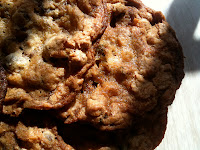I have gotten myself into a pickle lately. I like to bake, but I crave savory things more than I crave sweets. This has lead to a lot of baked goods being foisted on my effortlessly thin boyfriend, which I think, has him a little weary of sweets, and wary of my enthusiastic baking sprees.
Long story short: I have started trying to bake more bread, and since the jar of blueberry jam I made remains unopened in the fridge, I decided it was time to make some onion jam. Mission accomplished: crusty bread smeared with a savory spread.
The only thing to watch out for with this jam is time. All that it really requires is some slicing and some stirring, 4 hours of stirring to be exact. Maybe this would be good to do while you are doing your taxes, then you are forced to stay home, and you get to take consistent little stir-breaks to clear your head.
Caramelized Onion Jam
Adapted from the Los Angeles Times
5 pounds yellow onions (about 6 large onions)
1/2 cup olive oil
1 Tablespoon salt
*Be careful stirring the hot juicy onions, I kept splashing myself. It burns!*
Remove the skins from the onions and slice them in half and then in 1/4 inch slices lengthwise. Place the sliced onions into a large, heavy bottomed pot (7 quart or so). Pour the oil and salt over the onions, and stir to combine.
Set the mixture over medium heat, and cover. Stir it every 10-15 minutes, to keep the mixture from sticking to the bottom of the pan.
After 25-30 minutes, the onions will be very soft, and will begin sticking to the bottom of the pan (and browning).
At this point, reduce the heat to low, and cook for an additional 25-30 minutes, continuing to stir every 10-15 minutes. By the time this step is done, the onions will be silky and swimming in moisture.
Once it has gotten to that stage, remove the lid, and increase the heat back to medium. Cook, stirring frequently, until the liquid has evaporated, and the mixture becomes golden. This will take about 25-30 minutes.
After that, reduce the temperature to low, and continue cooking, stirring every 15-20 minutes until the onions become deeply brown. (this will take an additional 2 hours). Once they are deep brown, watch them more closely, and continue to cook them on low, stirring more frequently, for another hour. Making sure they do not dry out. When they are done, they should be reduced to a deep reddish brown marmalade.
Put the mixture into a jar, let it cool of a little bit, and stick it in the fridge (or eat it right away). It should last up to a week. Spread it on everything.















































